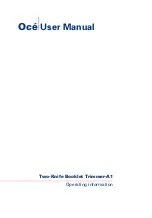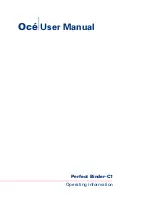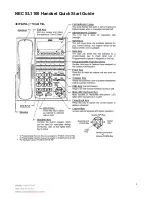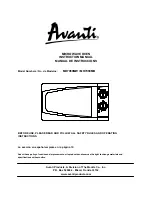
General
This operation and installation manual provides
general guidelines and suggestions to assist
you in using the SensComp, Inc. Cricket-S
ultra-sonic sensor module in many
measurement applications. For additional
information, please contact SensComp at
www.senscomp.com
or
.
General Installation Procedures
1. Always mount the Cricket-S sensor in a
suitable dry location. The Cricket-S is
designed to be used indoors or in protected
environments only. Excessive moisture on
the circuit board (and the sensors
transducer) will result in damage and
improper operation, and will void all
warranties.
2. Mount the sensor as vertically as high as
practical above all horizontal surfaces. The
sensor detection area is cone shaped at a
17 degree angle and the further the sensor
is away from the target the larger the
diameter the detection area is. This will help
to avoid false detections.
3. Mount the sensor in a location where
environmental interference sources are
minimized (examples are EMI sources, air
nozzles, excessive air turbulence, etc.).
4. Mount the sensor using (2) #6-3/4” or longer
screws.
5.
As shipped from the factory, the sensor has
been calibrated for maximum and minimum
range; user will need to set desired ranges
as needed.
6.
The (2) NPN open collector digital outputs
must
be “pulled up” through a resistive load
to +5-40 max. VDC external power source.
System Wiring
Brown Wire
– Power Supply – supplying 30 mA of
current (2.0 Amperes during the 0.5 ms
transmit pulse).
•
+8 to +24 VDC regulated power source.
Blue Wire
– Power Supply Common (Ground) –
Common Return for DC power supply.
Black Wire
– Load1 - Current Sinking Operation
(NPN open collector 600mA max.)
White Wire
– Load2 - Current Sinking Operation
(NPN open collector 600mA max.)
*The NPN open collector outputs turn on and off
when a target is detected (ON) or not detected
(OFF) as set by the Range 1 or 2 settings.
*NPN Open Collector outputs MUST be pulled up to
a positive power source in order to operate correctly.
See Figure 1.
Calibration Procedures
Note: The Cricket-S Sensor is calibrated before it
leaves the factory for one of the following settings:
•
1” - 12” version
•
6” - 240” version
Apply power to the sensor and let warm up for about
3 minutes.
1. Set Range-1
•
Place the target at the desired distance.
Depress and hold the “Range 1” push button
for about 3 seconds until you here a “chirp”
sound, then release the push button. This
indicates the range is set.
2. Set Range-2
•
Place the target at the desired distance.
•
Depress and hold the “Range 2” push button
for about 3 seconds until you here a
“chirp” sound, then release the push
button. This indicates the range is set.
•
The sensor is now calibrated to your
desired target distance for zero analog
voltage output.
3. Gain Adjustment
Note: The “GAIN” potentiometer has been
preset at the factory to provide the best
performance for the range of your Cricket-S
sensor. In the event that it is changed, the
steps below will assist you in returning it to
the proper value
•
To calibrate the “GAIN”, place the target
at the maximum desired detection
distance.
•
Rotate “GAIN SET” fully counter clock-
wise (CCW).
•
Slowly rotate “GAIN” clockwise (CW)
until detection occurs.
Rotate “GAIN SET” clockwise (CW) an
additional 1/16 turn.
9
Note: Always calibrate “GAIN SET” for
minimum gain required for reliable
detection. Excessive gain may result in
false target detection.
Detect LED’s
During normal operation, the LED’s will
illuminate, indicating that a target is
detected within the Range-1 or Range-2 set
point. For targets outside this range, the
LED will be off.




















